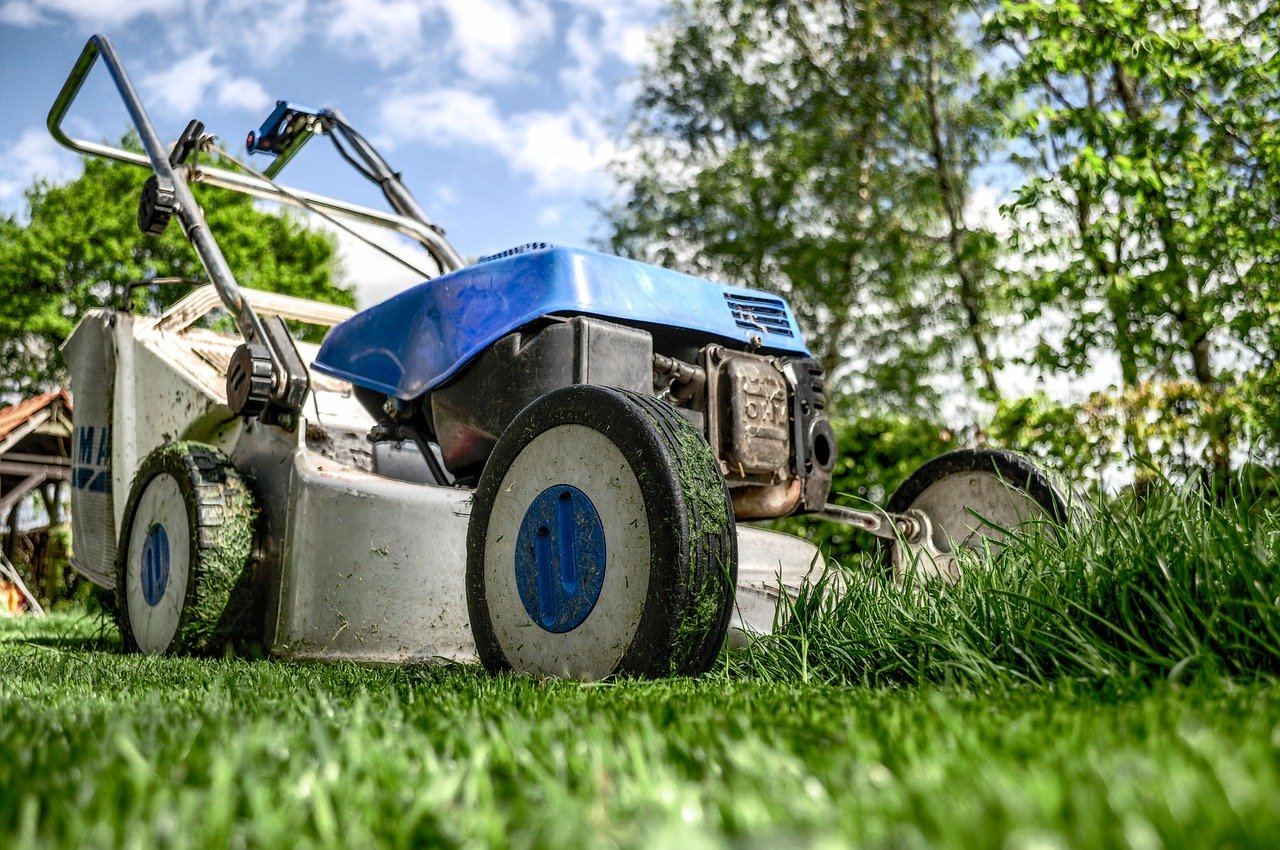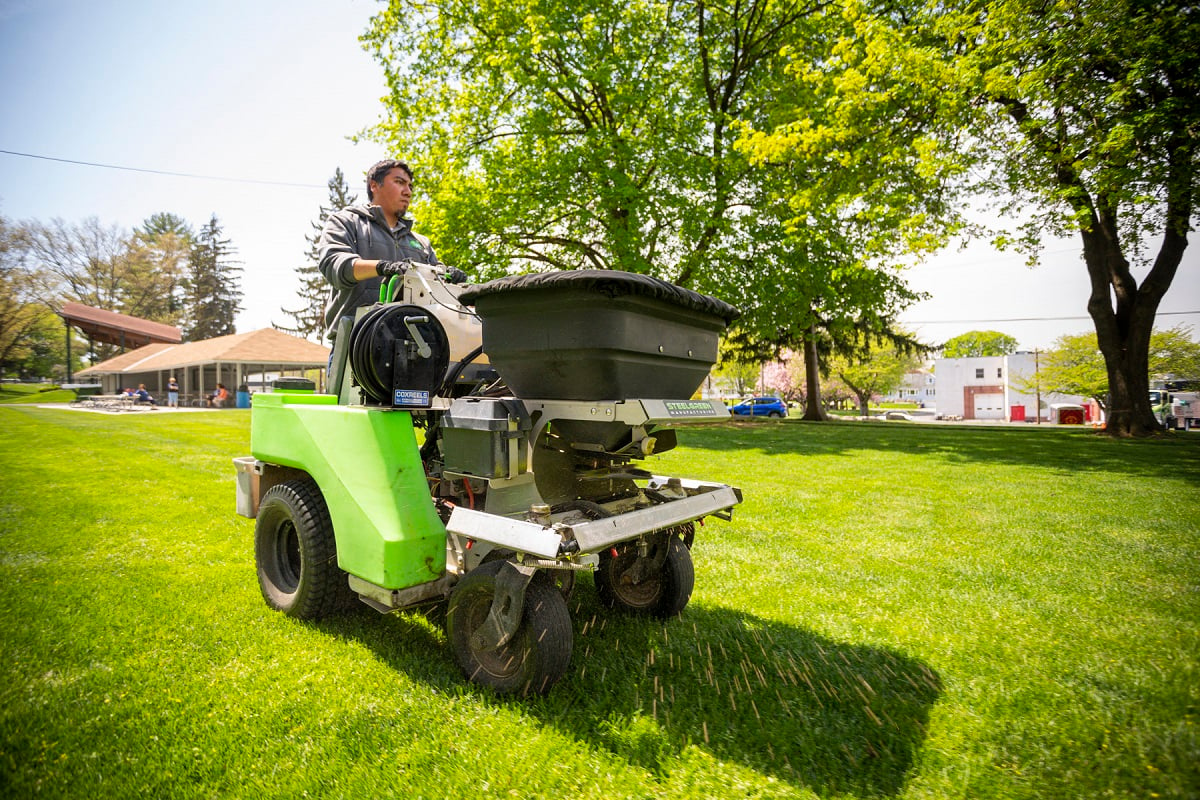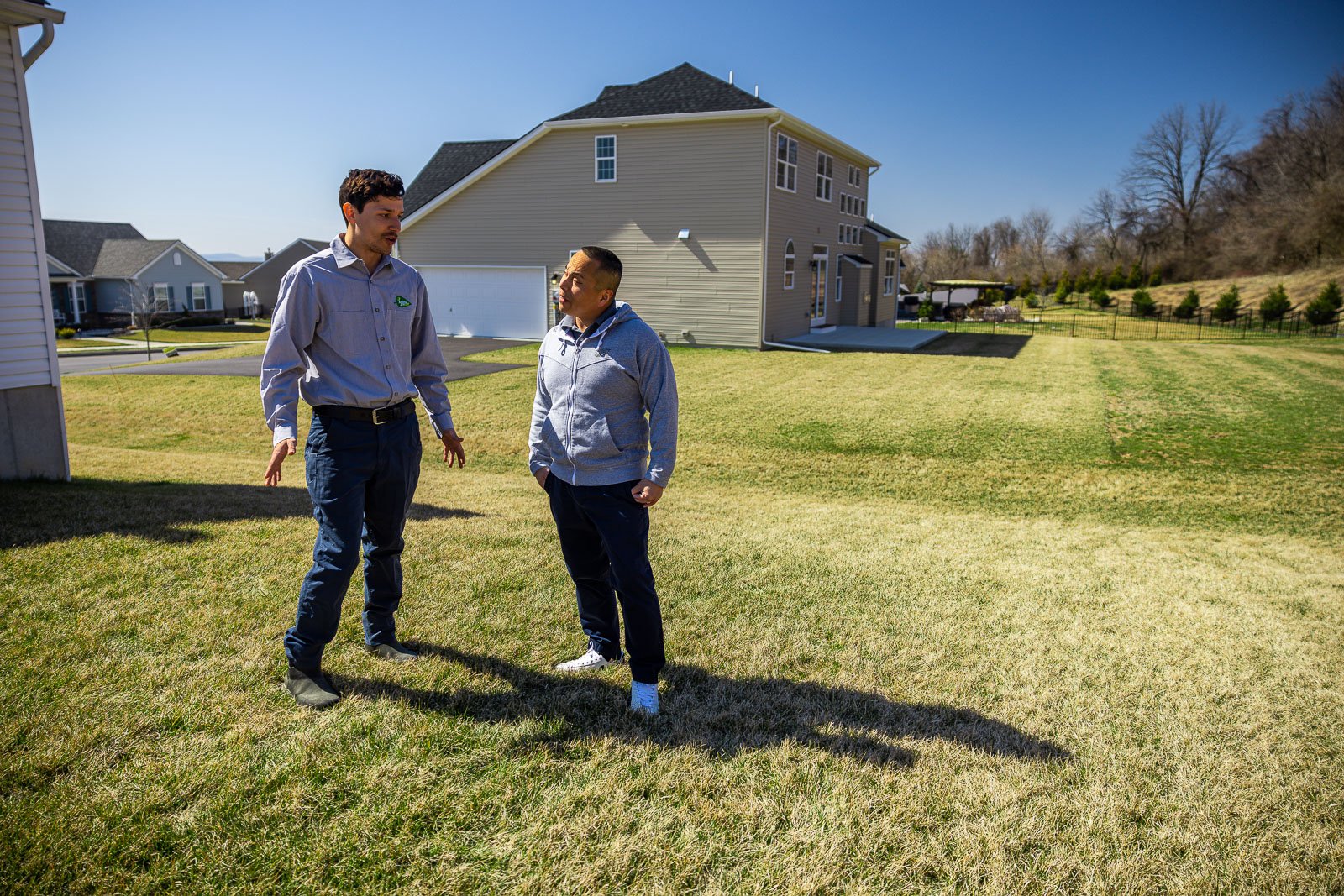Lawn care during a drought can be a challenge. Because drought conditions are already putting stress on your lawn, any additional stress that you add can really push things over the edge.
We understand that homeowners can get very frustrated about maintaining their grass in drought conditions but the most important thing that you can do is take care to avoid making things worse.In this article, we’ll talk about some of the most common lawn care mistakes people make on their drought-damaged lawns.
Mistakes to Avoid with a Drought-Stressed Lawn
Hopefully, by avoiding some of these blunders, you can keep your lawn as healthy as possible (even when the weather is not cooperating).
1. Mowing the Lawn Too Short
Mowing the lawn too short is always a mistake because it puts unnecessary stress on the lawn which can be hard for it to recover from. When people want to know why their lawn is turning yellow, sometimes it’s merely a matter of being overly stressed from excessive mowing.
But when a lawn is already experiencing drought stress and then, on top of it, you mow it too short, it’s a double whammy. That’s two significant stressors that your lawn has to deal with, and it might struggle to bounce back.
Instead, aim to mow no more than one-third of the height of the grass blades at a time.
It’s better to mow your lawn weekly than bi-weekly. Even though it can be hard to keep up with, when you mow more often, you put less stress on the lawn.
Your goal should be to cut no more than one-third of the grass blade at a time so that you aren’t putting unnecessary amounts of stress on the lawn. If your lawn grows fast, you might even need to mow twice a week to achieve this goal.
Of course, at the height of drought conditions, you may need to delay mowing. It’s better to keep your lawn a little on the longer side and then increase frequency when the conditions improve.
You might have to “cut high” a few times in order to stick to that one-third-of-the-grass-blade recommendation.
2. Mowing with Dull Blades
Again, this is a recommendation that we’ve made all the time, but it’s particularly critical when dealing with a drought-stressed lawn. When you mow the lawn with dull blades, it puts added stress on the lawn.
To get a crisp and level cut, you need to mow with a sharp blade and a level mower deck. You also want to have evenly inflated tires. We also recommend using a mulching blade and returning your grass clippings to the lawn.
This provides some natural compost and creates a healthier lawn.
3. Overfertilizing a Drought Stressed Lawn
Depending on the exact conditions, you might even want to avoid fertilization entirely during a period of drought. Improper fertilization during periods of drought stress can lead to turf burn.
When you work with a professional, they’ll know exactly how much fertilizer to apply (and when to apply it). This is important when it comes to avoiding further problems.
Unfortunately, many homeowners who take a DIY approach to fertilization often end up making mistakes during the hot, dry months of the summer.
Turf burn can be a difficult problem for the lawn to bounce back from and you may need to replace the turf in that area.
4. Waiting Too Long to Water
With lawn care, being proactive is always better than being reactive. You always want to make an effort to get ahead of a problem.
We’ll be honest that fixing drought stress is not always easy, depending on how bad it is. So, if you can take steps to prevent it in the first place, you’ll be much better off. Once you’ve already missed a bunch of opportunities to water, it can be hard to catch back up.
We are fortunate that weather forecasting technology often allows us to know when drought conditions are coming and provide us with the chance to plan ahead.
When you see 85-plus-degree days and no call for rain, we’d encourage homeowners to plan to start extra irrigation—even if the lawn looks good.
Working with a Pro on Lawn Care During a Drought
This can all feel incredibly daunting if you’re taking care of your lawn on your own. But if you’re partnered with a professional, they can help you make the best decisions and guide you along the way.

Drought stress can be incredibly challenging…there’s simply no way around that. Even if you’ve been doing all the right things for your lawn, the weather remains a condition that is out of your control.
And even when you take all the right steps to try and prevent further damage, lawns can still experience problems from drought stress.
Along with that, periods of drought also tend to bring other stressors to light. As your lawn struggles with a lack of water, insects might take this opportunity to try and attack. A lawn might also be more prone to disease. A weakened lawn can definitely start to experience other trouble.
Fortunately, when you are investing in a lawn care program, there will be preventative steps in place to prevent some of these other struggles.
A lawn care professional will also be able to guide you on whether your lawn is dead or has just gone into dormancy to deal with drought stress.
Ultimately, together you can make wise decisions that help get your lawn through tough times.
At Joshua Tree Experts, we’re ready and eager to help our clients who are dealing with drought stress woes. We know it can be stressful but we can help you implement good lawn care habits that will make a difference. By avoiding some of these common mistakes, you can also avoid making the problem worse.
With the right care for your lawn, you’ll gain valuable peace of mind. If you’re interested in having your lawn inspected and its health assured, contact us for a free quote or give us a call at 833-JTE-TREE.
Mower Image Source | Wikimedia




